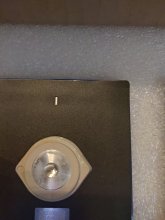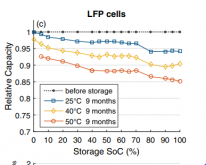Hello everyone.
I bought matching EVE cells from Dongguan lightning, performed top balancing, and arranged them in 16S configuration (48v 280ah).
When the charging/discharging current is above 20amps, I observe 0.20v difference between the maximum volt and minimum volt, which triggers my low/high cutoff voltages. I think this 0.02v difference is huge (Imagine some cells reaching 3.00v while the rest are at 3.20v).
My busbars and bolts are tightened. Internal resistances of cells are close.
Only one solution worked, which is to re-arrange some cells (in my case, I just swapped 1 cell that drops fast, with its adjacent cells), and viola, I only had 0.02v difference between max and min during 20-30amps charge/discharge. (lowest cell 3.01v, highest cell 3.03v)
But after 2 days, the issue happened again. I posted this issue in a different forum and learned that 3 other people experience this very same problem.
Anyone here who also experience this issue?
I bought matching EVE cells from Dongguan lightning, performed top balancing, and arranged them in 16S configuration (48v 280ah).
When the charging/discharging current is above 20amps, I observe 0.20v difference between the maximum volt and minimum volt, which triggers my low/high cutoff voltages. I think this 0.02v difference is huge (Imagine some cells reaching 3.00v while the rest are at 3.20v).
My busbars and bolts are tightened. Internal resistances of cells are close.
Only one solution worked, which is to re-arrange some cells (in my case, I just swapped 1 cell that drops fast, with its adjacent cells), and viola, I only had 0.02v difference between max and min during 20-30amps charge/discharge. (lowest cell 3.01v, highest cell 3.03v)
But after 2 days, the issue happened again. I posted this issue in a different forum and learned that 3 other people experience this very same problem.
Anyone here who also experience this issue?





